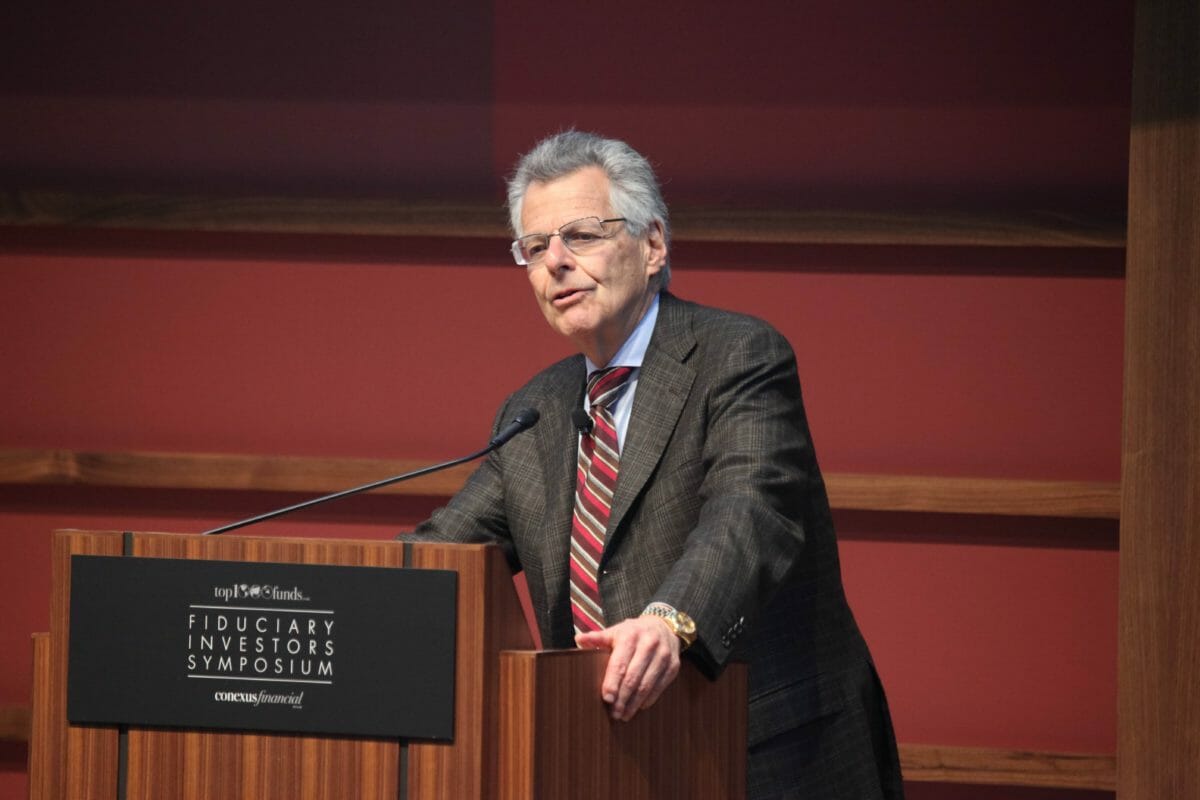Investors can integrate risks from climate change into their portfolios, a panel of experts said at the Fiduciary Investors Symposium at Stanford University.
Delegates heard that the impact of climate change on their portfolios could span a drought hitting hydro power assets, major crop failures, the growing scarcity of agricultural land and the coal exposure sitting on Indian banks’ balance sheets.
Jaap van Dam, principal director, investment strategy, at the $268 billion Dutch pension fund PGGM, said many of the most significant global risks came from climate change and would “hit investors sooner or later”. Integration at PGGM means the fund now looks at climate change through different lenses, comprising technological disruption, resource availability, and the physical impact of climate change and policy risks such as a carbon tax.
“These lenses help us analyse the uncertain consequences of climate change,” van Dam said.
PGGM uses a carbon footprint in its active equity portfolio, the pension fund’s risk department runs climate stress-testing models and it also uses big data to analyse risk in its real estate and infrastructure portfolios.
“We can measure impact on different sectors and avoid stranded assets in the portfolio,” he says.
The International Centre for Pension Management has recently written a guide on climate change for asset owners, which offers a roadmap for integrating climate change into portfolios. It details the importance of ensuring that management and the board “own the problem”, to set a tone that permeates the organisation. Van Dam said strategy must involve internal teams and external stakeholders.
“Implementation seems simple, but it isn’t,” he said. He suggested investors start with baby steps, get experience and build on it.
At the $335 billion California Public Employees’ Retirement System, integration has included the fund targeting the biggest emitters in its vast equity portfolio, which accounts for about 48 per cent of assets under management.
“We have the right and responsibility to make sure climate risk is being dealt with,” said Anne Simpson, CalPERS’ investment director, global governance.
CalPERS’ size and diverse investment strategy means it “owns a little of everything”. Its liabilities also stretch so far into the future it can’t hide from climate risk behind traditional hedging and insurance strategies. Simpson noted that even a diverse portfolio wouldn’t protect the pension fund from the pervasive impact of climate change, which bleeds into different assets and allocations.
The fund’s strategy has focused on finding which companies in its portfolio are responsible for the most emissions. By working with partner investors and the UN-backed Principles for Responsible Investment, CalPERS found that of the 11,000 companies it held, fewer than 100 were responsible for the vast majority of emissions and were “systemically important greenhouse-gas emitters”.
The revelation allowed the pension fund “to get organised” and start pushing for strong governance, disclosure and climate-competent boards. Simpson noted that only 1 in 10 companies provide incentives for board members to manage climate risk. Delegates heard how strong corporate boards were important because investors can’t “step in” and write business plans for companies. What they can do is make sure boards are independent, competent and diverse, with a pool of talent that can take on risk.
“We want board alignment and disclosure,” Simpson said. “If there is no progress, we will use ownership to drive change.”
CalPERS is also independently benchmarking corporate progress. “We hear that big emitters are promising to make cuts, but we want independent validation”, Simpson told delegates. Noting how “when talk fails” the pension fund will take action to hold boards accountable, she pointed to the difference between oil majors in the US and Europe. Exxon and Chevron have not engaged to the same extent as oil majors in Europe, such as Total and Shell, which have begun a transition. She also noted the importance of cajoling fund managers to “line up” with this as well.
It is a point PGGM’s Van Dam picked up, noting that fund managers have short-term returns but climate change is a long-term challenge. Asset owners can bridge the problem with proactive governance and by knowing their subject matter.
“If you run an unlisted real-estate portfolio, it is very clear you need to deal with energy efficiency within the building,” he says. Integrating climate strategies into public passive mandates “is easier than you think”, via carbon tracking strategies and engagement, he explains. It is more challenging integrating climate risk into active public equity mandates that are run externally; however, he notes “sound conversations with investment managers on these challenges” are now much more common. Strategies could include giving managers a carbon budget that declines over time, or changing the benchmark. If all else fails, look for another manager, he says.
Delegates also heard how pension funds’ fiduciary responsibility to earn returns is inherently linked with navigating the risk of climate change.
“There was nothing good about Peabody,” Simpson said, referring to former US company Peabody Energy, which was the world’s biggest privately held coal company but filed for bankruptcy. Stranded assets pose similar risks, she explained.




